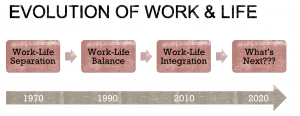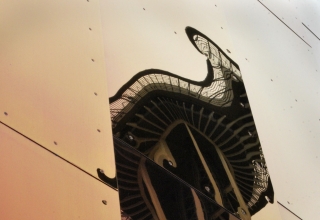
Laura Mendelow, MAOD, PCC and Ann Deaton, Ph.D.
In the 1970s we referred to Work-Life Separation; in the 1990s it was Work-Life Balance; and by 2010 we evolved to Work-Life Integration. Today, “integration” has come to mean never shutting down, taking calls while on vacation—and being available 24/7. It is a sign of the times when executives—and tired parents—pay a premium for a Digital Detox at resorts boasting every amenity except for WiFi. So, what will the next decade bring? And, more urgently, how can we help our coaching clients manage through their own work-life tensions in today’s frantic world?
We presented this very idea to a group of Organizational Development professionals at the OD Network conference in October 2018. During the session, we analyzed the past to help us understand where we are today and prepare for the future. This article represents a snapshot of our design (and outcomes) and a powerful process that you can use when working with clients who struggle with work-life tensions.
STEP 1: Look Back to Step Forward
During the session, we first took a step back in time to analyze and honor how we have evolved as a society. What is interesting to note in the evolution of work-life is that people are not only influenced by the current time but are also influenced by how they were raised. In other words, as people enter the workforce, they carry with them preconceived notions about work and lifestyle based on their childhood experiences and observations.
As we looked at each period—Work-Life Separation, Work-Life Balance, Work-Life Integration—we identified both the upsides and downsides using a Polarity Lens [Learn more about Dr. Barry Johnson’s work on Polarity Thinking]:
















